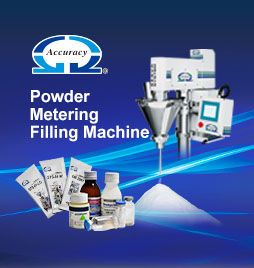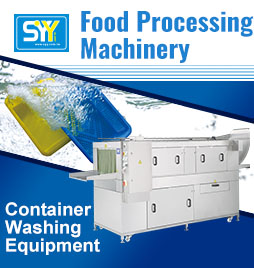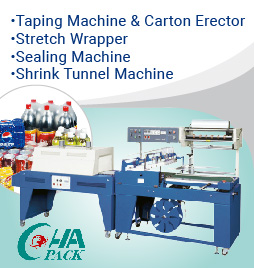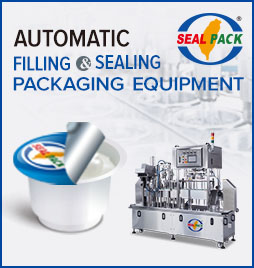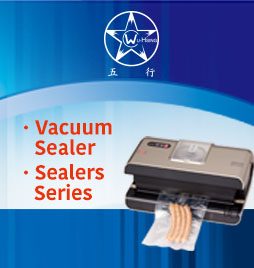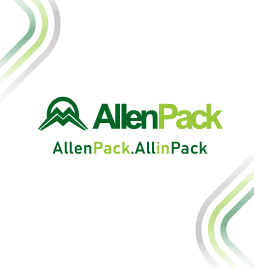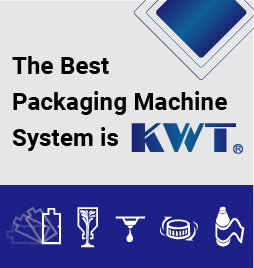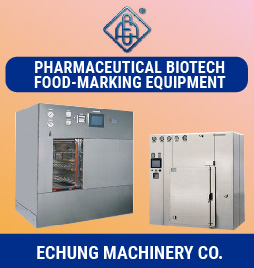QUALITY AND FOOD SAFETY with computer systems

In these times of new technologies and constant changes, the greater competition in any business makes companies rely more and more on computer solutions to carry out their actions. Food laboratories are not exempt, which constitute a fundamental area within the organization and, therefore, require their own system. ● Marcelo Cabezon (*)
(*) Bachelor in Systems. Responsible for the consultancy firm Ampersand Sistemas, specialized in IT for Laboratories. He is a computer auditor, computer expert and consultant in ISO standards, Argentina.
Data technology is becoming a mainstay in the food industry. Not only does it help to better predict and plan production, but it also makes it possible to respond to the new information needs of consumers, who are increasingly concerned about what they consume and the origin of the food they take home.
The data systems combine information on the status of production lines and planning, and advise employees who control the production process on how to optimize the different lines of work. In addition, with artificial intelligence and automatic learning they can learn from previous situations and continuously improve.
Usually known as LIMS (LABORATORY INFORMATION MANAGEMENT SYSTEM), this is a group of computer-based methods and tools used by laboratories to administer or manage their data and disperse results in specific areas.
Knowing that the primary asset of any laboratory, serving any purpose and in any industry, is nothing more or less than information, a LIMS should help to:
- manage the processes and the way of working defined within the laboratory
- manage the data and information generated by the laboratory
- comply with the regulatory and quality requirements of the laboratory
The laboratories constitute a fundamental area within the organization, they work as a business in itself, they have their own clients, suppliers, budget, products, etc. and, therefore, they require their own system.
They are also subject to the same or greater pressures than the rest of the areas or companies to which they provide services, whether due to an increase in demand, a rise in expectations, support for the dizzying advance of technology, working on a tight budget and carrying out their tasks efficiently and effectively.
Consequently, a LIMS must help the laboratory to resolve all these pressures by improving functionality, quality, costs, resource utilization, and the value the laboratory represents to the rest of the organization.
Some of the most important reasons for implementing a LIMS are:
- avoiding typing and transcribing errors - direct acquisition from instruments
- quickly responding, ensuring quality results
- controlling the quality of raw materials before they are used by the production plants
- automating chemical formula calculations
- automatically validating results
- generating and distributing multiple reports
- complying with regulations
- managing information
- reducing the number of possible errors
- quickly registering the samples
- information security and control
There are many offers in the market of different scopes, technology and benefits, as well as the permanent debate about the convenience between developing a system or acquiring a product. In any case, it should be ensured that the solution meets at least the following requirements:
- That it is flexible, that is, that it can be absolutely and totally configured by the user without the need to resort to the supplier or developer in the face of any change or new requirement.
- That it is auditable, guaranteeing traceability, that all records are subject to audit, and that it complies with the regulations that apply to each company or industry (ISO, FDA, GLP, GMP, etc.).
- That it is collaborative, allowing to connect very easily to the instruments of the laboratory and to integrate with the rest of the systems in force in the organization, as well as with the totality of utilities and office tools.
- That it be "future-proof", allowing it to be scalable and adaptable to new versions not only of the system itself, but also in terms of updating operating systems, database engines and interfaces with other systems, thus avoiding further efforts and new re-investments.
A LIMS should be able to offer suitable solutions for R&D, analytical and process laboratories, and a combination of all of them, since organizations require all these specializations simultaneously in many cases. It is the IT solution for food and beverage laboratories to build a healthier, cleaner and safer world.
Food and beverage laboratories demand:
- adapting to changes in global food safety regulations
- integration with other laboratories and business systems
- rapid release of results and samples
- flexible workflows and ability to execute methods
- fast extraction of multiple information bases, traceability of analysis and batch processes
- reduction of manual processes and paper use
- access to information in real time
Integrated solutions and information integrity
This is a fundamental aspect of laboratory data management. It is always convenient to be able to integrate all the necessary functionality in the same tool. The dispersion of solutions and, therefore, also of suppliers, generates great difficulties when trying to integrate all the information in a safe and efficient way. Nowadays it is no longer enough to have a LIMS, but other related and integrally linked tools are also required.
It is extremely important to clearly establish the functionality required for each laboratory and each organization. Some are common and transversal to all of them, while others are specific depending on each case. But it is important to make sure that the implemented solution contemplates at least the following:
- Parameterization: Initial configuration of all required static and dynamic tables, eventual or one-time update by system administrators, where the laboratory master data is defined.
- Handling and management of users: Identification of all system users with their roles, security, access permissions, status, job description, and laboratories or services enabled.
- Laboratory organization: Hierarchical organization of areas and sectors, including definition of teams or service groups, with the personnel assigned in each case.
- Administration, handling and management of equipment and instruments: Identification of each instrument, components, general characteristics, calibrations, verifications, maintenance, tests, standards, lists of assigned workloads, scheduled tasks and data capture methods.
- Environmental monitoring: Allow to monitor the production environment in which the lots or sample requests are created and to be able to visualize in a graphic way the various sampling points designated to track environmental variables.
- Determination of sampling points: Determine, schedule and assign frequency for sampling according to different analysis and testing needs.
- Customer management and administration: Administration of internal or external clients, contracts, contacts, tests, samples of each project, results, specifications, meetings, interviews, invoicing, price lists, quotes and prices.
- Management and administration of human resources: Registration of laboratory staff, electronic invitation to training courses, training calendar, certifications obtained, skills for the development of tasks.
- Material and reagent handling and management: Material management, with its properties, recipes, safety instructions, handling and storage control, warehouses, attachments and hazard alerts, supplier management, purchase orders, consumption and automatic discount of materials used, determination of minimum stock.
A LIMS
should be able to offer suitable solutions for R&D laboratories, analytical laboratories, process laboratories, and a combination of all of them, since in many cases organizations require all these specializations simultaneously
Test management: Manage the list of tests with their respective analysis, including calculations, limit detection, specifications and assignments, properties and methods.
- Management of sampling plans: Determine its validations and specifications, type of data, ranges and acceptable parameters for each analysis.
- Chain of Custody: Ability to locate or dispose of samples and storage containers.
- Methods management: Operation with standards and methods handled by the laboratory, version control, change history, printing and viewing of all documentation.
- Document management and version control: The document management must be integrated to the system and have a strict control of versions, controlled copies, with their authors, approvals and respective dates.
- Automatic calculations: Allow all types of calculations and functions using the values entered or received from the instruments, and operate them with existing data in the laboratory files.
- Stability studies: Manage the handling of products that can be kept under different storage conditions. Consider different time intervals, analyze behaviors and specifications.
- Planning for sampling and analysis: Samples or batches of samples should be entered into the system using various methods.
- Traceability: Possibility to observe the analysts' certifications, the registration and calibration of the instruments used, details and changes of each sample, and the electronic signatures aligned and in compliance with ISO 17025 in each sample.
- Calendar and work planning: Calendars with automatic alerts with all laboratory activities for each user and analyst.
- Workflow Designer: Workflows must be able to be designed for any type of information with consistent visibility for the format and report designer.
- On-line audits: Enable, according to the permissions and attributes of each user, to view all operations performed within the laboratory with all available information.
- Report Designer: Allow in a simple and clear way the creation of different types of visualizations and information outputs, suitable for any type of user without computer knowledge, with different types of formats and graphics, and exportable to other systems or external tools.
- SQC Control: Determine control charts with different graphs, averages, derivatives, standard deviation, capacity, trend curves, and all configurable by users.
How to select and implement a LIMS?
It is clear that the only way to manage a laboratory efficiently and effectively is through reliable and secure computer tools. The first step should consider one of the fundamental premises of the "Validation of Computer Systems", which is the preparation of user requirements.
One of the main reasons for failure in the decision is when you do not have well defined what we need, how we need it, and why we need it. This reality often forces to redefine and resize the project, with the usual delays in implementation and increased costs. It is also very important to plan the growth of the laboratory in the future.
A LIMS is a complex, highly regulated and integrated solution to multiple "third parties," such as systems, office tools, laboratory instruments and other utilities. Proposing the possibility of a development is feasible, but normally its implementation takes too long, and requires a large number of highly trained professionals in many different disciplines to solve it successfully.
The serious problem here is that once implemented, a "new project" begins, and perhaps even more important than the first, which is the maintenance and evolution of the system implemented over time and the new requirements demanded by the organization in particular and the market in general.
Currently there is a worldwide trend to acquire "configurable solutions," not only in the field of laboratories, but also in all industries that require software as a fundamental platform for their activities. The best way to ensure the success of a project of this magnitude is to analyze what the market offers in this area. These companies should be evaluated by their track record, market presence and customer references.
It is always convenient to know in which and in how many companies the evaluated solution is installed, and of course in which laboratories of the same area it has been implemented. It is also advisable to request and demand references within the local or international scope, not only to analyze the robustness of the product but also to analyze and talk with users and project managers about the implementation process. It is important to make sure that the supplier will have suitable personnel to accompany the laboratory in its implementation project with some guarantee of success.

